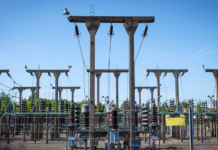ISLAMABAD — Pakistan’s biannual review of federal state-owned enterprises (SOEs) has revealed staggering financial losses across the public sector, with Pakistan International Airlines (PIA) and the National Highway Authority (NHA) among the largest contributors to a cumulative net loss of Rs343 billion for the first half of FY2025.
The report, released by the Finance Division’s Central Monitoring Unit (CMU), underscores the deepening fiscal strain caused by mismanaged, underperforming public entities, many of which continue to operate without viable financial models or accountability mechanisms.
PIA, which recently underwent a sweeping financial restructuring, reported a net loss of Rs4.6 billion for the year, despite showing a technical accounting profit of Rs26 billion. The discrepancy stems from the recognition of a deferred tax asset (DTA) — a non-cash entry based on future taxable income projections. CMU officials clarified that this should not be interpreted as actual profitability, warning that it distorts earnings quality and masks underlying inefficiencies.
The airline’s books were cleaned up through the creation of a new holding company, PIAHCL, which absorbed Rs660 billion in legacy debt and non-core assets. As a result, PIACL’s liabilities dropped significantly, with long-term financing obligations slashed from Rs295 billion to Rs13 billion, and finance costs reduced from Rs79 billion to Rs10 billion. However, operational issues persist. The airline earned Rs204 billion in revenue but still recorded high operational costs — including Rs75.6 billion in fuel expenses — resulting in a slim operating profit margin of 2.25%.
Despite these improvements, accumulated losses, high administrative costs, exchange rate risks, and continued negative reserves (Rs73 billion) remain serious red flags. The CMU urged urgent reforms including fleet modernization, route optimization, digitization, and human resource restructuring. The government has expressed intent to move toward privatization or strategic partnerships for PIA following its delisting from the Pakistan Stock Exchange.
Meanwhile, the NHA posted the single largest loss among all SOEs, recording a deficit of Rs153.3 billion in just six months, pushing its accumulated losses to a staggering Rs1.95 trillion. The report attributed this to an unsustainable toll-revenue model that fails to cover the costs of Pakistan’s rapid road infrastructure expansion.
The scale of losses across other SOEs was equally alarming. Quetta Electric Supply Company (QESCO) lost Rs58.1 billion, raising its total accumulated deficit to Rs770.6 billion. Sukkur Electric Power Company (SEPCO) posted a Rs29.6 billion loss, with Rs473 billion in total shortfall. Pakistan Railways, another perennially loss-making entity, recorded a Rs26.5 billion loss, taking its historical deficit to Rs6.7 billion.
The situation in the power distribution sector (DISCOs) is particularly dire. After adjusting for government subsidies, core operating losses for these utilities hit Rs283.7 billion over six months, extrapolating to Rs600 billion annually. QESCO led the pack again with a Rs92.6 billion loss, followed by PESCO (Rs53.6 billion) and HESCO (Rs39.6 billion). Even technically profitable DISCOs like MEPCO and FESCO turned negative after subsidy adjustments, highlighting structural flaws in the current tariff regime.
The report flagged persistent 20% technical and commercial losses in electricity distribution — caused by inefficient billing, poor recovery, and transmission leakages — as a primary driver of the sector’s hemorrhaging. The CMU called for sweeping reforms, including governance restructuring, privatization or concession models, improved accountability, and modernization of metering and billing systems.
Pakistan Steel Mills added Rs15.6 billion to the fiscal burden, with accumulated losses now at Rs255.8 billion. PTCL (Rs7.2 billion), Pakistan Post (Rs6.3 billion), and the Utility Stores Corporation (Rs4.1 billion) also remained in the red. GENCOs (I-IV) posted combined losses of Rs8.3 billion, led by Guddu, Muzaffargarh, and Jamshoro plants, while Neelum Jhelum Hydro Power Company added Rs2.3 billion in losses.
Combined, these over 15 SOEs now carry an accumulated loss of Rs5.89 trillion.
The report identifies PIA and PTCL as the most structurally vulnerable, citing sub-60% compliance with the SOEs Act and frequent external interference. It recommends aligning these enterprises with national development goals through institutionalized performance targets and long-term business planning.
Despite PIA’s cleaned-up balance sheet, the government and CMU stress that real turnaround will require deep operational reforms. The same applies across the SOE landscape, where fiscal viability now hinges on ending political patronage, enforcing financial discipline, and embracing market-oriented strategies.
Absent such interventions, the report warns, the mounting losses of state-run entities will continue to undermine Pakistan’s macroeconomic recovery and fiscal sustainability.
























